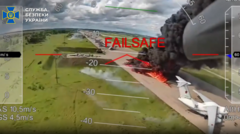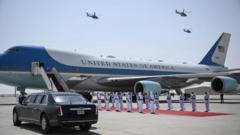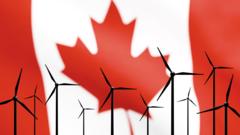New research reveals that the warming effects of jet contrails can be significantly reduced through minor adjustments in flight paths, with the potential to cut climate damage at a low cost per flight. This topic is set to be discussed extensively at the COP29 climate conference.
Simple Solutions Proposed to Address Jet Contrails' Climate Impact

Simple Solutions Proposed to Address Jet Contrails' Climate Impact
Aviation experts suggest easy fixes for contrail-induced warming effects, highlighting the importance of addressing this issue at COP29.
Jet contrails, the visible trails left by aircraft, have come under scrutiny for their role in climate change. According to recent studies led by aviation experts, the warming effect caused by these vapors can be tackled effectively and affordably. The findings indicate that implementing small changes in flight patterns could drastically reduce the climate impacts associated with contrails.
Researchers emphasize that contrails, formed when airplanes fly through cold, humid air, contribute to an artificial layer of clouds, trapping heat in the atmosphere. Carlos Lopez de la Osa from Transport & Environment highlights that the climate warming from contrails is comparable to the carbon emissions from aviation. This emerging concern will be presented at COP29, the UN climate conference taking place in Baku, marking its debut focus on this issue.
While many are familiar with the scientific explanation behind contrail formation, conspiracy theories claiming they contain harmful chemicals often overshadow the conversation. These unfounded allegations range from mind control to pandemic spreading, causing confusion around a vital environmental topic. Matteo Mirolo from Breakthrough Energy underscores the importance of accurate information and consensus.
The study points out that a mere 3% of flights are responsible for around 80% of the contrail warming effect. By adjusting the flight paths of only a small number of aircraft, it is possible to significantly mitigate the problem by over 50% by 2040, at an estimated cost of less than £4 per flight. Factors such as geography, flight latitude, and time of day significantly influence contrail impact, with evening flights contributing more to climate issues.
To minimize contrail formation, airlines would need to incorporate additional constraints in flight planning, particularly avoiding areas where these trails form. Lopez de la Osa suggests that this is one of the simpler climate solutions being discussed at COP29. The researchers aim to raise awareness of the issue, showing that addressing contrails may provide an effective and cost-efficient approach to combating climate change, alongside the ongoing developments in sustainable aviation fuels.





















